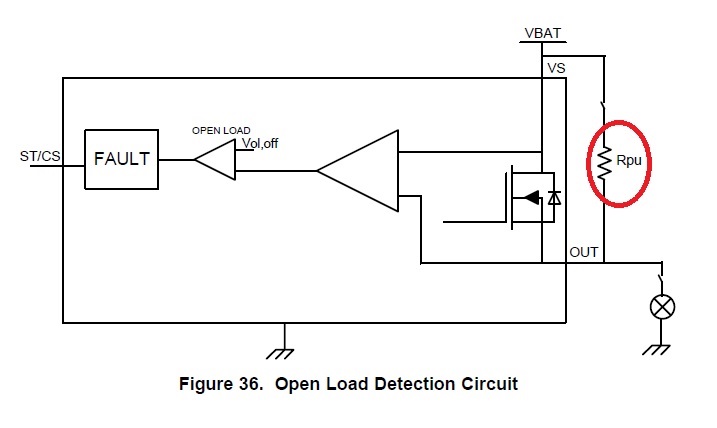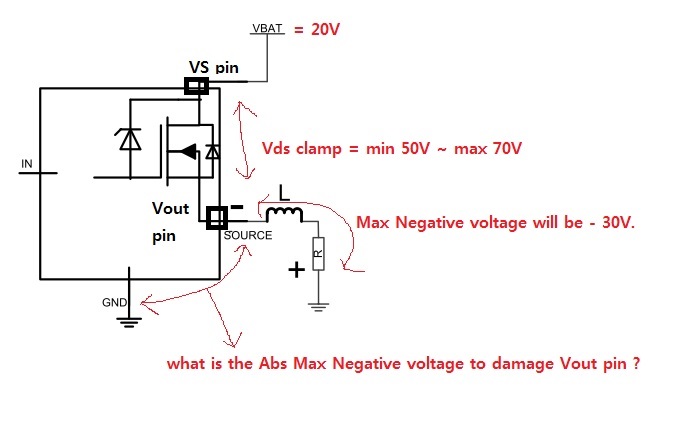Hi Team
to successfully win TPS1H100-Q1, I need your help.
[Q1] "the Current limit" operation is activated only in the On state ?
"the Current limit" operation can be activated in the Off state also ?
[Q2] "Short to GND(Overload detection)" can be detected only in the On State( IN Pin = high ) ?
the device cannot detect "Short to GND(Overload detection)" in the Off state( IN pin = Low) ?
[Q3] the below external pull up resistor needs for both the off-state open load and the off-state short to battery ?
why we need the external pull up resistor between VS and Vout pins ?
and if no using the external pull up resistor, what side effect happens ?
expect very detail explanation.
[Q4] what is the Abs max negative voltage between Vout pin and GND to damage the Vout pin as below ?
in fact, we will apply Max 20V at VS pin, and expects Max - 30V negative voltage at switch off.
we would like to know such Max - 30V negative voltage can damage Vout pin or not.




